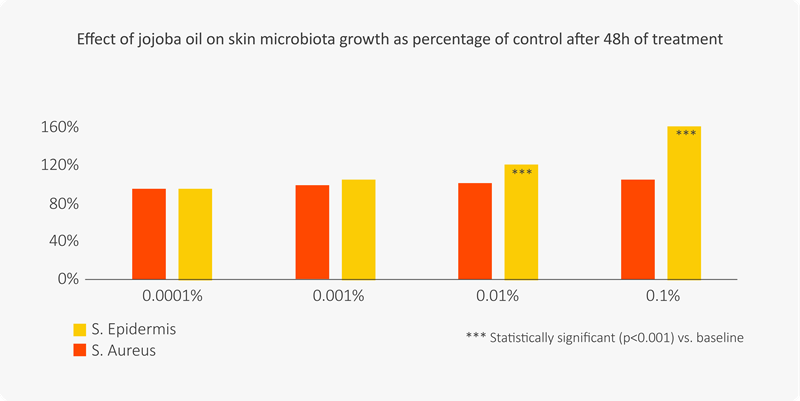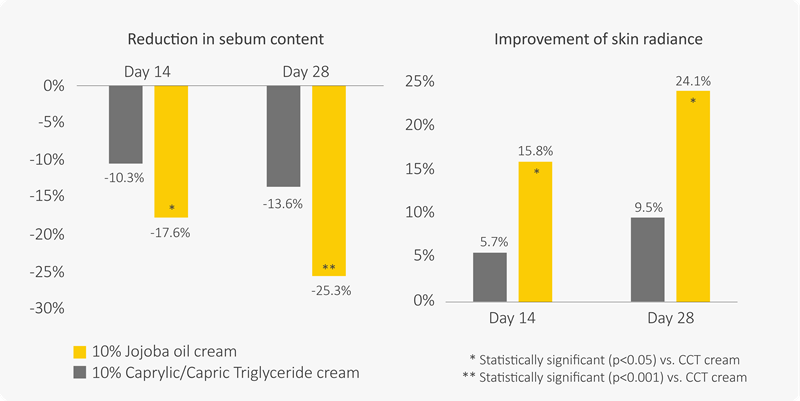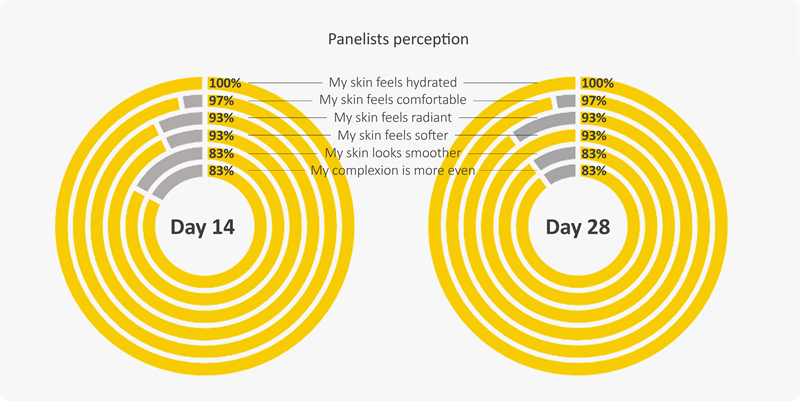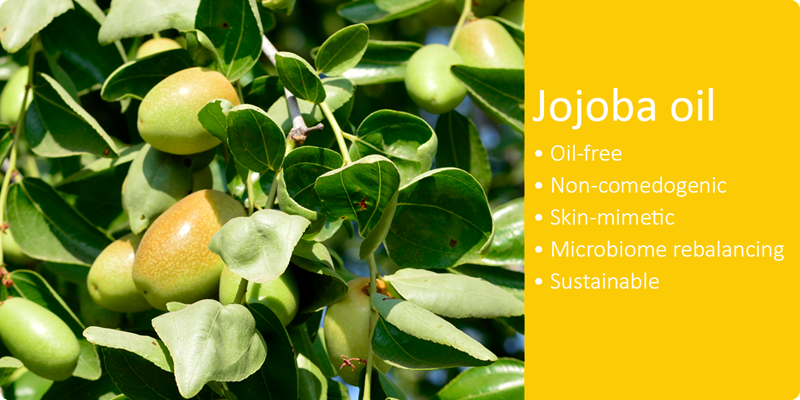Connecting The Dots: Why Natural Oils are so Popular
Jojoba oil’s popularity is driven by its versatility in the cosmetic world. From skin care to makeup or hair care, there isn’t a single category where the natural oil cannot be found in significant proportions. Considering that jojoba oil tends to be more expensive than most mainstream oils, such as sunflower oil, olive oil or castor oil, it begs the question: why are formulators keen on using it in so many formulations? panels.
We start answering the question by reviewing a new set of studies that looks at the effect of jojoba oil in different applications, ranging from skin care, hair care and lip care. The studies are involving in-vitro and in-vivo testing and multiple consumer.
Jojoba oil’s popularity is driven by its versatility in the cosmetic world. From skin care to makeup or hair care, there isn’t a single category where the natural oil cannot be found in significant proportions. Considering that jojoba oil tends to be more expensive than most mainstream oils, such as sunflower oil, olive oil or castor oil, it begs the question: why are formulators keen on using it in so many formulations? panels.
We start answering the question by reviewing a new set of studies that looks at the effect of jojoba oil in different applications, ranging from skin care, hair care and lip care. The studies are involving in-vitro and in-vivo testing and multiple consumer.
Rebalancing skin microbiota
The skin is a complex and dynamic ecosystem that is inhabited by bacteria, archaea, fungi and viruses. These microbes are collectively referred to as the skin microbiome. Consumers and formulators continue to recognize the importance of the microbiome to understand overall skin health, and that by promoting a healthy microbiome, cosmetic products can lead to a better, protected skin A large variety of skin conditions, ranging from acne to eczema, have been associated to changes in the skin microbiome. Microbiologists tend to categorize our skin bacteria in two categories: the commensal bacteria, that live in harmony with our skin cells and biological cycles, and the pathogenic bacteria, whose proliferation tends to negatively impact our skin health. Commensal and pathogenic bacteria generally co-exist in a balanced manner.But multiple factors are likely to break the delicate balance found in a healthy microbiome: diet, genetic predisposition, age, hygiene, lifestyle are only some of them. Situations where pathogenic bacteria overwhelm commensal bacteria are usually associated with drier and more sensitized skin conditions.
Our technical team designed an in-vitro experiment where Staphylococcus epidermidis and Staphylococcus aureus were selected and cultivated to respectively represent commensal and pathogenic bacteria. After an initial incubation period of 18h followed by a 48h treatment period with jojoba oil, the number of bacteria was measured via photometry.
The measurements reveal that jojoba oil favors the growth of the commensal bacteria compared to the non-treated culture. What does it mean for our skin? Most people suffering from dry or unhealthy skin are likely to have a microbiome characterized by an excessive pathogenic bacteria presence compared to commensal bacteria. By boosting the growth of the “good” bacteria, jojoba oil can contribute to rebalancing our skin microbiome.
Additional gene expression studies, not detailed in this article, further confirmed the positive effect of jojoba oil on skin radiance and skin comfort.
Over the course of 4 weeks, several instrumental measurements were made at 14 and 28 days to assess the quantity of sebum on the surface of the skin and skin radiance. The results are represented in the graphs below. The jojoba oil-based regimen led to a 25% decrease of sebum content. Overall, skin radiance increased by 24%. The results demonstrated statistical significance. The jojoba oil-based formulation outperformed the caprylic/capric triglyceride for all measured parameters, confirming the positive effect of the natural oil over other traditional emollients.
Additional gene expression studies, not detailed in this article, further confirmed the positive effect of jojoba oil on skin radiance and skin comfort.
From microbiome to skin complexion
To confirm the efficacy of jojoba oil on consumers’ skin, the team worked with an external independent testing facility, who recruited a 60-person panel, both male and female. For this blind study, the volunteers were split in two groups, one group was instructed to apply a 10% jojoba oil O/W formulation twice daily while the other group was given a placebo formulation, where jojoba oil was replaced by caprylic/capric triglyceride.Over the course of 4 weeks, several instrumental measurements were made at 14 and 28 days to assess the quantity of sebum on the surface of the skin and skin radiance. The results are represented in the graphs below. The jojoba oil-based regimen led to a 25% decrease of sebum content. Overall, skin radiance increased by 24%. The results demonstrated statistical significance. The jojoba oil-based formulation outperformed the caprylic/capric triglyceride for all measured parameters, confirming the positive effect of the natural oil over other traditional emollients.
The clinical evaluations were concluded with a satisfaction survey, where panelists could score skin improvement attributes. Not only did most of the volunteers feel a significant and broad improvement of their skin health, they perceived it very quickly, even after only two weeks of use!
Conclusion
For hundreds of years, jojoba oil has been a part of the Native American traditional medicine and over the past decade, it has found its way into the most effective skin care treatments. These studies shed some new light on the activity of the desert oil and confirm the existing link between the rebalancing of skin microbiome and the visible skin improvement triggered using jojoba oil in a face care routine.Contact us today for more details on our on-going studies on jojoba oil.



